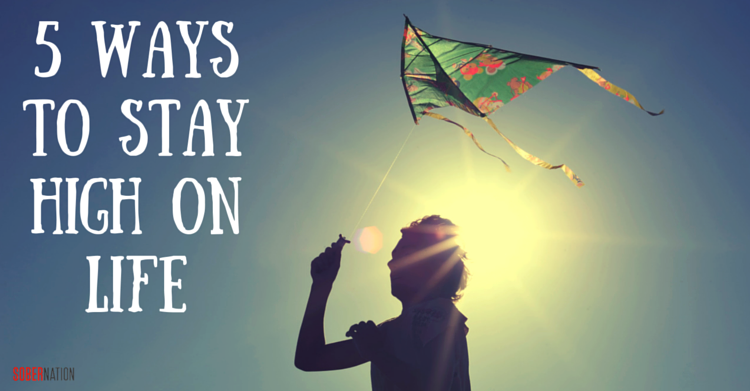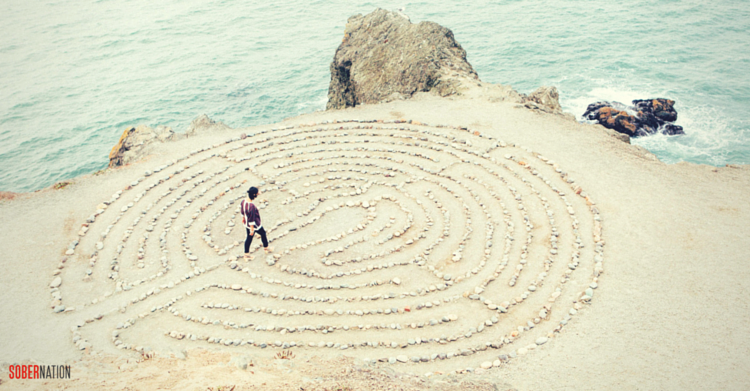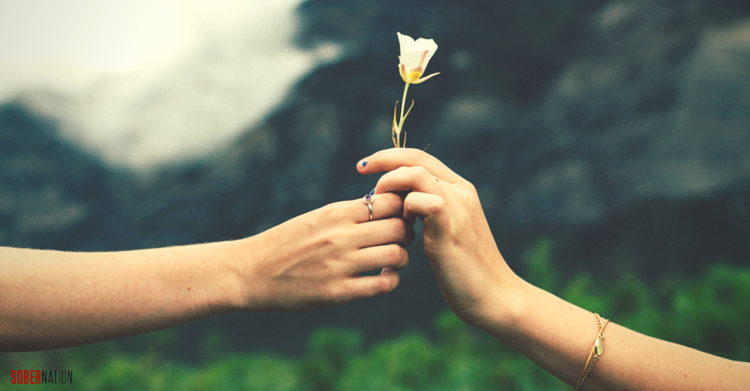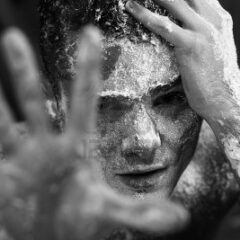Jul 8, 2016 | By Nadia Sheikh
5 Ways to Stay High On Life
Mental Health Recovery Relapse Prevention Spirituality
As a freshman in college my relationship with drugs was in the early honeymoon phase—lots of fun, everything felt new, my affection was always growing, and I experienced little to no consequences. In recovery, I have to be careful not to glorify or romanticize the times in life when I was getting high. I have to remember the darkness and life-threatening problems that it led me to in the end.
But, I kept getting high for so long, despite the consequences that eventually came with it, because I loved the experience. I loved the euphoria that drugs induced, the way my mind opened to new ideas, how comfortable I felt around people, our philosophical conversations, and the connection that I felt to those people and the surrounding universe. Drugs were something spiritual and meaningful to me, for a long time.
After abusing drugs long enough, they lost all meaning and spiritual value—they became my way of coping with an overwhelming fear of life. Early in recovery, I was jealous of the people in the world who can indulge in substances safely, who can have that relief every once in awhile and carry on with a healthy life. Being high or “having a buzz” produces a good feeling, namely through huge dopamine surges, which is how I fell in love with drugs initially. But, in sobriety, we can still feel good by exploring new, natural highs—things that make us feel good like substances once did, but don’t take over our lives.
Running & Exercise

It seems like most people hate running but, if you’ve experienced a runner’s high or the euphoria that any kind of physical activity can induce, you know what I’m talking about. For me, running is therapeutic, a time when my brain gets meditative, less anxious, and I can lose track of my body and time. Sounds kinda like being stoned, no?
Biologically, intense physical activity puts our body in a state of stress and mild pain, which causes our brain to release neurochemicals called endorphins. Studies have shown that endorphins make people happier, but they also act as a natural painkiller in our body. Endorphins are structurally similar to morphine, and activate our opioid receptors naturally to produce feelings of euphoria.
This can happen with any kind of physical activity, whether it be weight-lifting, dancing in your room, swimming in the pool, or even going for a walk. The more intense the activity and your physical strain, the greater your high.
Creativity & Art

Whether you identify as an artiste or you feel like you don’t have a creative bone in your body, finding a way to get creative can also get you feeling good. Much like meditation can relieve stress and anxiety, engaging in creative, hands-on activities can produce the same therapeutic effects in our brains.
When we are creative, our brainwaves slow down from their normal hamster-on-a-wheel speed and move closer to alpha waves—the state our brain enters just before we fall asleep. The more we engage in our creative activity of choice, the deeper we go into this brain state called creative “flow.” We become absorbed in the activity, lose all sense of time and self, and gain a feeling that we are accomplishing a task and doing something meaningful. All of this has the power to quiet the external chaos in our lives and give us a brain buzz.
With some creative exploration, you might find an activity you enjoy. Anytime we do something we truly enjoy, our brain releases a natural dopamine reward—the same neurotransmitter that gave us pleasure when we used a substance, just in a healthier amount. So start exploring! By all means, try your hand at coloring books, drawing, painting, writing, knitting, sewing, playing an instrument. But art, and creativity in general, goes far beyond these activities.
Elizabeth Gilbert, a prominent author, encourages anyone who identifies as “not creative” to replace the word creativity with curiosity, because all of our creative pursuits come from our curiosity. We can be creative and try new things with cooking or baking, gardening, home décor, our clothes and shoes, even in cleaning and reorganizing our homes. If you engage in a creative activity regularly, you will enjoy it more as your skills progress it will become easier for your brain to enter flow.
Learning & Spirituality

I love to learn. This is the essence of life, for me. This hunger was even at the center of my drug use—I felt like I became more and more enlightened with each new drug I tried, and those experiences were what I considered spiritual. But then, they stopped working. I started to feel numb and barely believed I was real.
As humans, we’re curious by nature. As children, we explore new things and are quick to ask “why” when the adults explain things to us. There may not always be answers, even when we are the adults. The beautiful thing is that the high exists in the pursuit. This is how I view my spirituality—a lifelong process of learning about myself and the universe.
I love to talk to new people and learn their lives. I love to read, to listen to TED Talks, to watch documentaries. I also love shows like Orange is the New Black because it gives me insight into an experience I’ve never had. I love my job because, despite all of my field research with drugs, there is so much for me to learn about the substances I was using, my personality and mental wellness, and my life in recovery.
All of the knowledge I absorb adds to my understanding of myself. I also actively seek to know more about myself, especially through meditation and writing. When I meditate, I just have to be with myself, observe my own thoughts, and I like seeing what makes me tick. Writing provides a safe place where I can express thoughts that aren’t as easy to share with someone else. Sometimes in writing, I find more clarity in untangling my thoughts and feelings.
There’s biological factors behind our joy in learning, too. Dopamine pays a key role in learning, because our brain is more likely to remember an activity that gave us a dopamine reward. A major reason that we can remember something we’ve learned is because it gave us pleasure to make sense of things, so dopamine was released in our brains.
What are you curious about? Feed that part of your brain and experience the satisfaction of gathering your meanings. The best part of this high? Learning never has to stop.
Nature & Adventure

Connecting with nature is also a piece of my spiritual quest to gain new insight—it’s my way of interacting with and learning about the universe. When I was abusing substances daily, there were days I didn’t even bother to go outside unless it was to drive to my dealer or smoke a cigarette.
In sobriety, as my senses started to return to me, I became aware of things like all of the different shades of green in the trees, the smell of rain, the explosion of colors at sunset. We start to experience the things that we had numbed out for so long, and we get another chance to experience a childlike awe at nature and the universe. Venturing into nature is also a healthy escape from our day-to-day grind that can relieve some of our stress, as well as a chance to explore and engage our adventurous side.
Every person falls somewhere on the spectrum of sensation-seeking, and it’s even considered a characteristic personality trait of addicts and alcoholics. Recent studies have explored what happens in the brain when a person experiences adventure and new things, and most evidence shows that these activities also give us a nice zing of dopamine! By being mindful, staying in the moment, and allowing ourselves to actually appreciate our amazing surroundings, we can give ourselves an adventure-buzz anytime.
Connection & Service

My drug use eventually progressed to just me – alone in my room – but, in the honeymoon phase, I loved to get high with my friends and philosophize. I valued those conversations, thinking we were solving all of the world’s problems with our enlightened ideas, and I felt connected to those people because of the “depth” we shared with each other.
This sense of connection also gives our brain a dopamine reward, which makes us feel good. In sobriety, we can seek this connection with the people around us by participating in our recovery community, and especially by helping each other. The feeling that we can help one another makes us feel useful and allows us to experience feeling connected, as well as needed. It’s even scientifically proven that being of service produces a “helper’s high” in our brains! All of these feelings combined give me a sense of fulfillment and a sense of belonging—a high so much better than any I’d known before.
I hear some people who identify themselves as sensation-seeking, some as thrill-seeking, some say they have been trying to fill a place inside of them that’s empty. However we label this search, each of us is ultimately looking for something that will give us a good feeling. With substances, the physical sensations and and chemical processes in the brain provide an intensely comforting feeling. In recovery, we get the chance to go deeper than that to find more satisfying, natural highs.
